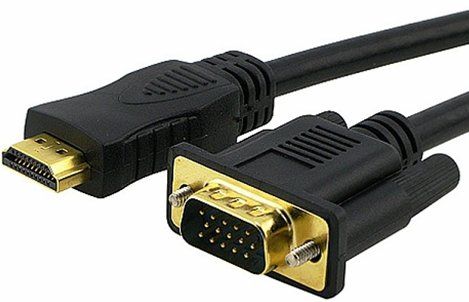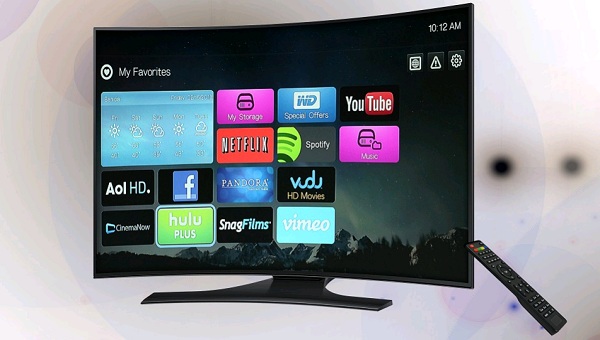HDR support on TV - what is it?
 Every year, scientific and technological progress brings to the attention of ordinary consumers more and more new models of household equipment. It seemed that just recently all apartments had standard ray tube televisions. And today LCD panels and high-digital systems are already experiencing their decline, being replaced by 4K TVs with slightly curved screens. But the real trend of the past year has been TVs with HDR resolution. Let's figure out what HDR means and why such an effect is needed.
Every year, scientific and technological progress brings to the attention of ordinary consumers more and more new models of household equipment. It seemed that just recently all apartments had standard ray tube televisions. And today LCD panels and high-digital systems are already experiencing their decline, being replaced by 4K TVs with slightly curved screens. But the real trend of the past year has been TVs with HDR resolution. Let's figure out what HDR means and why such an effect is needed.
The content of the article
HDR support
At modern exhibitions, where new products from leading TV equipment manufacturers are presented to the public, specialists and connoisseurs of innovation pay special attention to the quality of the transmitted image: contrast, color brightness, color accuracy. The highest requirements are met by TVs that support HDR mode.
What is HDR

The widespread introduction of this technology in television broadcasting began in 2016, and today, two years later, it is becoming increasingly popular. The abbreviation HDR is translated from English as “high dynamic range”. The main task of this function is the most reliable image of the surrounding reality.From a technical perspective, the two most important components of a screen image are contrast and color accuracy.
- Contrast refers to the maximum range of ratios between the darkest and lightest areas of the frame.
- Color accuracy refers to the realism of the color displayed on the screen.
The overall quality of the resulting image depends on the combination of these two components.
REFERENCE. The term "extended range" in this case refers to peak illumination in the bright areas and denser blacks in the darker parts of the image.
Simply put, the blacker the black and the whiter the white on the TV screen, the more voluminous the picture appears. They approach the natural perception of the surrounding world by human vision.
First application - in photography
Earlier, before television, such technology had already found its application in photography. From several frames with different exposures, one digital photograph was formed, simulating an extended range of perception.
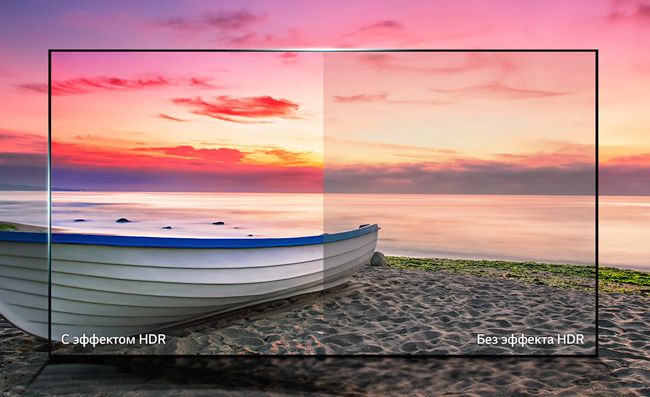
Usually for this purpose four identical frames are taken, each lighter than the other. All of them are then combined, merging, into one image. This process can be carried out either manually or automatically, using special programs built into the digital device. Because of this effect, the photo often seemed unreal and overly detailed. It looked more like a piece of painting than a digital photograph.
Visual effect
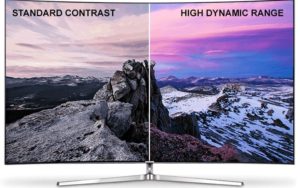
As an example, you can compare a state-of-the-art 4K TV and a regular flat panel, but with an extended dynamic range function.
To the human eye, the image on the second screen will look more realistic.And this is even despite the higher resolution in the TV series of 4K receivers. They have four times more pixels than the standard “full HD” produced five years ago.
IMPORTANT! The HDR function, which allows you to obtain a more contrasting, “deep” and natural-colored image, always looks better than other modern technical tricks.
The rich brightness of colors also allows you to achieve the desired visual effect. In addition to increased gradation of light and shadow display, HDR receivers have increased coverage of color ranges. Such TVs are not only capable of high-quality display of primary colors. They can separate and display all their shades an order of magnitude better. Thanks to this, the overall palette of displayed colors increases significantly.
REFERENCE. Unlike photography, a video image does not seem unreal to the viewer, as if it has gone through many digital filters.
On the contrary, it is perceived much more natural and realistic.
The essence of technology
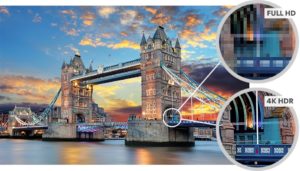
HDR technology - “high dynamic range” - is a combination of two integral components: a TV receiving and transmitting device and content.
Contrary to the opinion of the uninitiated, a television receiver equipped with an extended range function is the simpler of these two parts. The TV should only be able to highlight certain areas of the screen with color, making them brighter than analogues that are not equipped with an HDR function.
Content required for technology

The situation with content is much more complicated. It must be able to support the HR function, and without this there will be no “extended dynamic” image.Over the past couple of years, many shows and films have already been shot in a format that can support HDR. But still, their number in relation to regular content is still negligible.
REFERENCE. Even previously filmed content can be added to HDR without any problems. In this case, you will not need to make any special additions to the finished video material.
The main problem of transmitting content to a TV is the actual transmission of information data. The video material is first compressed and then broadcast.
When receiving normal data, a TV equipped with extended dynamic range will see and reproduce only a standard picture. And only special video content will be broadcast on the screen in true HDR quality. Only together with it will the TV be able to receive special metadata that gives commands to the equipment how to display a particular frame.
Receiver requirements
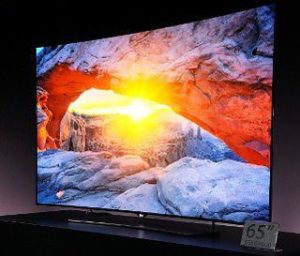
In addition to the content requirements, to obtain a high-quality image, there are additional conditions for equipping the television receiver and digital set-top box.
They both must have HDMI output. Its version must be higher than 2.0, and if necessary, it can be updated programmatically to 2.0a.
Although there is only a small amount of video content using this image enhancement feature, the number is constantly growing. In addition, a number of companies working in the field of software creation offer special applications to users. They are capable of automatically converting regular video into high-quality HR content.
TVs with HDR support
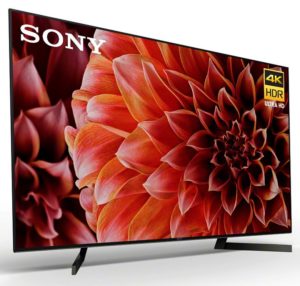
The world's leading television equipment companies have been producing TVs with built-in HDR support for several years now. However, there is still no consensus among manufacturers regarding the standardization of this function.
In this regard, today there are TV receivers with two types of formats on sale.
- HDR-10. In it, the resulting metadata is completely attached to the video file. This technique is more common on the world market today.
- "Dolby Vision". In this format, each image frame is processed separately. So far, only TVs from the South Korean company LG work this way.
This year, however, the first step has been taken towards standardizing receiving equipment. Manufacturing companies have agreed to certify TVs with HDD functionality as UHD-Premium. In addition, equipment made in 4K Blu-ray format is also capable of working in high-quality format.
Model overview
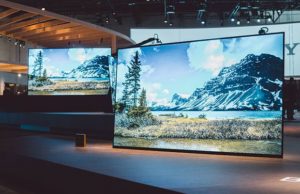
The following models of HDR displays are available on the domestic market.
- South Korean LG presented the UD99 panel, 32 inches and costing 70 thousand rubles.
- Dell released the UP2718Q model for 130,000 thousand rubles.
- Samsung LU28E590DS is a fairly budget option, costing only 23 thousand rubles. with HDR-10 support.
- Sony TVs are also on sale. True, the cost of the “Japanese” is by no means budgetary and amounts to about 130 thousand rubles.
In conclusion, it should be noted that HDD technologies today are the best way to get the clearest and most saturated image on the screen. Therefore, it is no exaggeration to say that extended dynamic range is the future.




